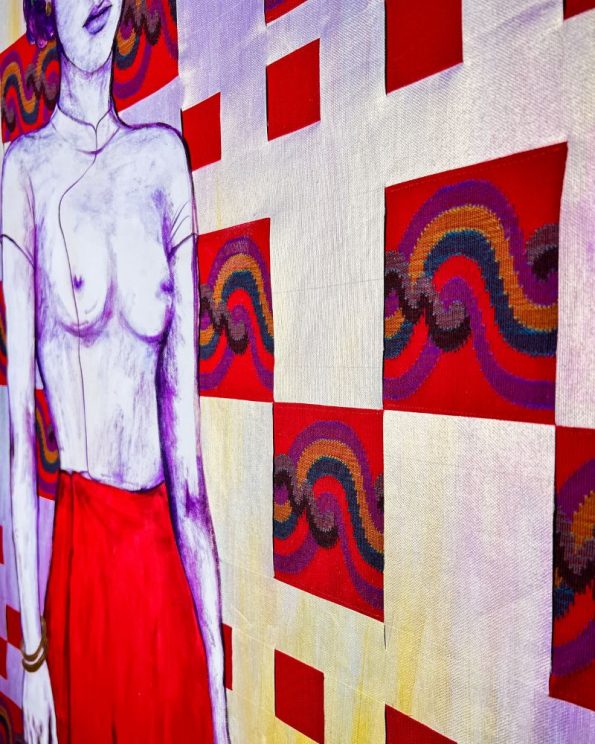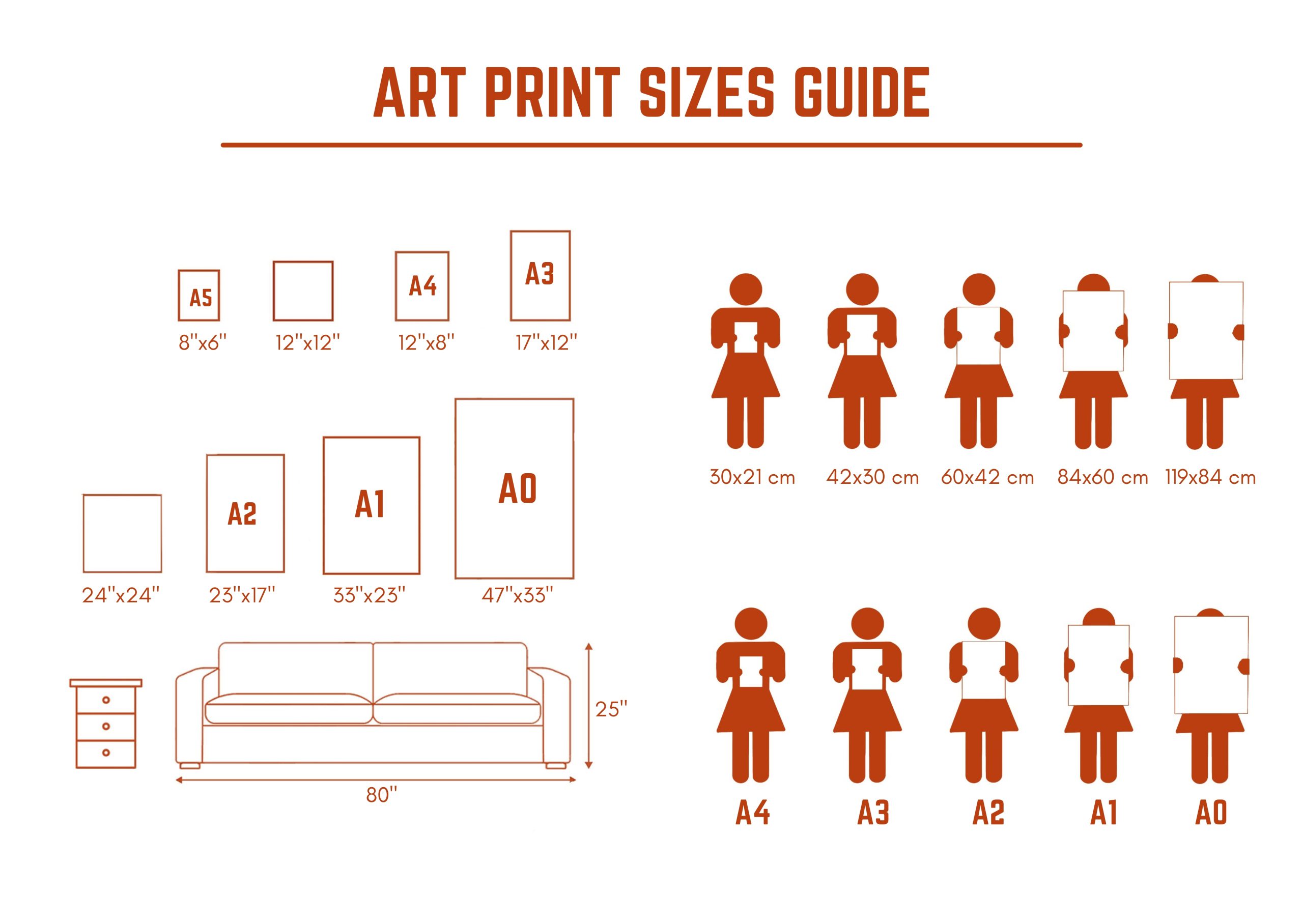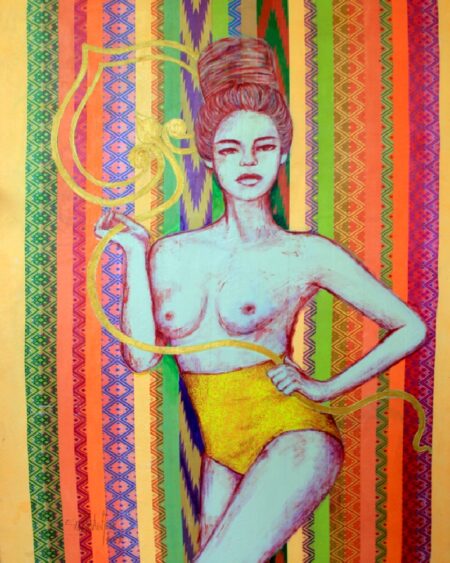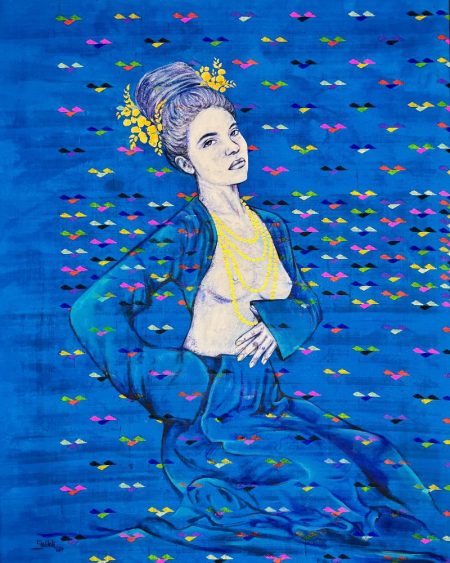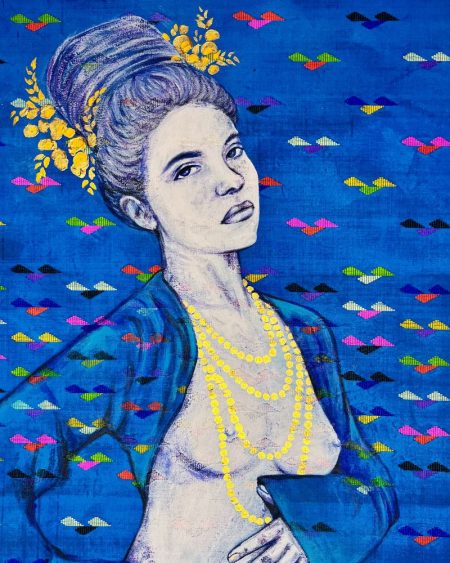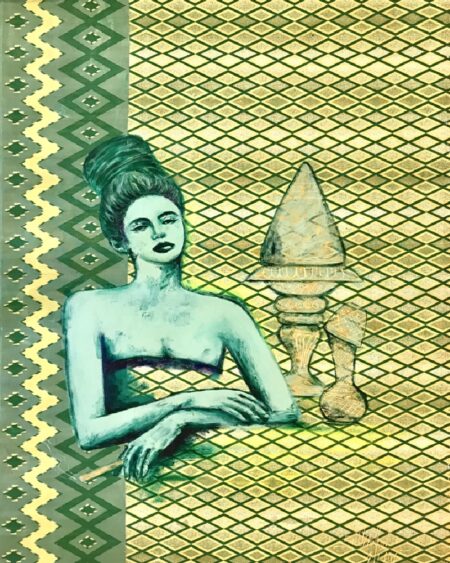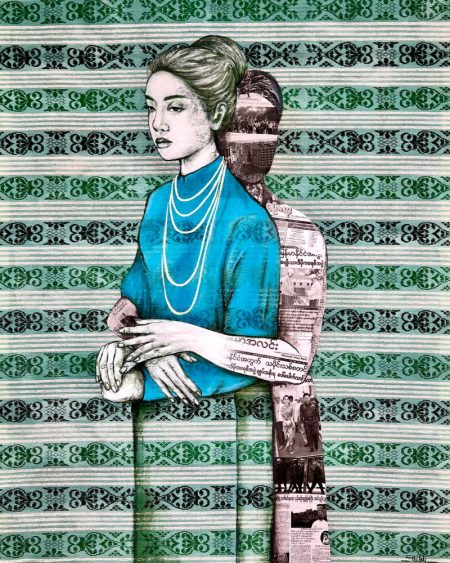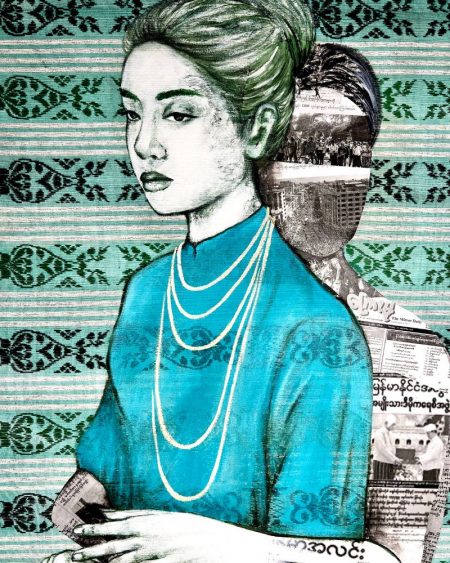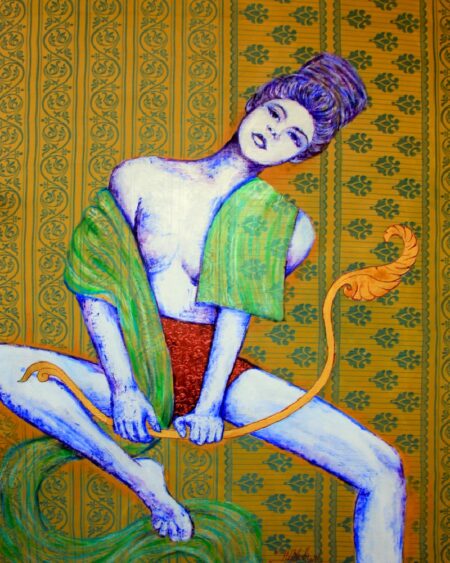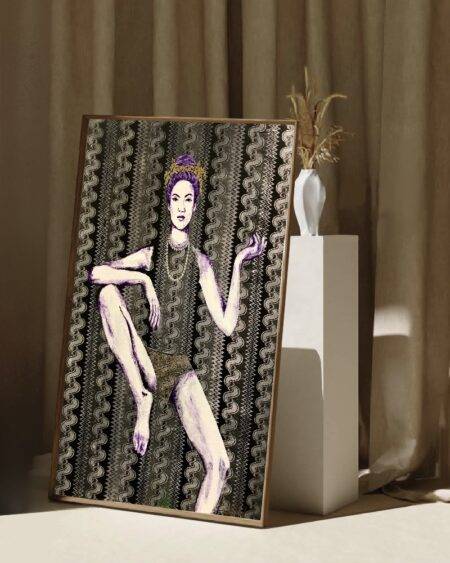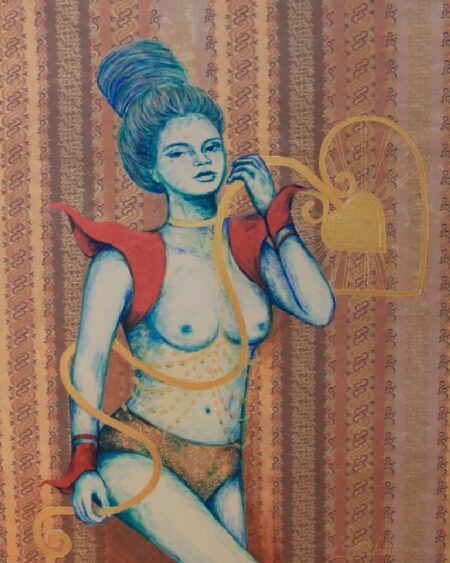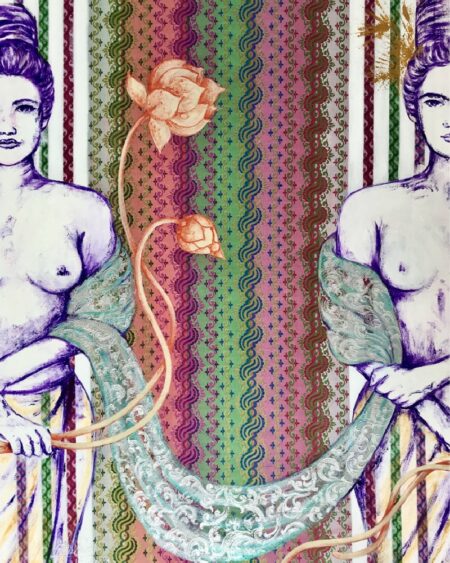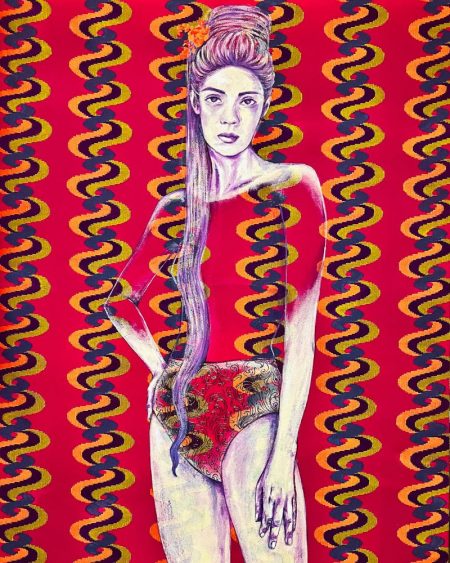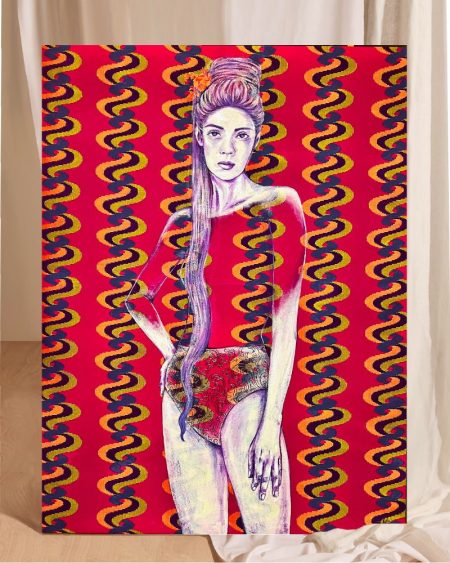Lingering Lotus Dreams
121 x 91 cm (36×48 inches)
Acrylic on Burmese hand-woven Fabric
(This painting is being exhibited at the Bangkok Art and Culture Center (BACC). The collection is only accepted for reservation now, with availability for collection starting in February 2024. For reservations, please contact via email)
This work embodies enduring thoughts and aspirations, evoking the purity and resilience found in the delicate petals of a lotus flower. The imagery is akin to envisioning beautiful and lasting dreams that mirror the growth and triumph over challenges—much like the lotus, which thrives in adverse conditions, symbolizing spiritual development.
In my artwork, I delve into the essence of fabric in Myanmar, intricately weaving together the threads of history, culture, ethnicity, and religion. This artistic exploration narrates the story of a profound struggle, revealing how fabric serves as the connective thread in the rich tapestry of Myanmar. Fabric, beyond its materiality, emerges as a site of social struggle. For generations, it has enclosed traditional notions of femininity. However, a movement of resistance, challenging both military and patriarchal power, is emerging. My paintings serve as a visual portrayal, intertwining history, culture, and religion to articulate the multifaceted narrative of this struggle.
—
Background Story: Fabric is not merely material but also a site of social struggle. Clothing has become the focal point of a tug-of-war between patriarchal and feminist ideas about how women exist in society. For generations, fabric has been employed to encapsulate traditional notions of femininity; however, a movement of resistance to both military and patriarchal power is emerging to challenge this.
In Myanmar, tradition maintains that a man’s ‘hpone’ (their masculine essence) can be lost if he passes under female clothing such as the longyi, a traditional long skirt ubiquitous in Myanmar. This belief is so common that it is unquestioned by almost all Burmese people. It is a part of everyday life, for instance, women will not hang their clothes higher than male clothes or will even hide them while drying for fear of ‘contaminating’ the male’s ‘hpone’.
Because of these beliefs, feminist resistance within Myanmar society has sometimes been able to use their clothing as a weapon and a flag of rebellion. During recent skirmishes following the 2021 military coup, streets in Yangon and other urban centers were draped in women’s longyis, goading the military soldiers who, trapped by superstition, refused to walk under the garments and thus would not enter these communities of resistance. This movement became known as the Sarong Revolution.
On the other side, the Military began a campaign forbidding women from wearing any other garments except the longyi, believing that all other clothing styles were an assault on the traditional culture of Myanmar and assuming a self-appointed role as ‘guardians of tradition’ from outside influences.
AVAILABILITY: Out of stock
121 x 91 cm (36×48 inches)
Acrylic and paper collage on Burmese fabric
(This painting is being exhibited at the Bangkok Art and Culture Center (BACC). The collection is only accepted for reservation now, with availability for collection starting in February 2024. For reservations, please contact via email)
AVAILABILITY: In stock
AVAILABILITY: In stock
121 x 91 cm (36×48 inches)
Acrylic and paper collage on Burmese fabric
(This painting is being exhibited at the Bangkok Art and Culture Center (BACC). The collection is only accepted for reservation now, with availability for collection starting in February 2024. For reservations, please contact via email)
AVAILABILITY: In stock
AVAILABILITY: Out of stock
AVAILABILITY: Out of stock
AVAILABILITY: Out of stock
A pride of being who you are, knowing what you want, valuing your existence is the motif of this framework. The unique fabric patterns merged the traditional props which innovated intimacy, highlighting the innermost nature of womanhood/femininity.
Proudly withholding against the current culture of daily lives for treating women-wears as dark things to make men’s souls dirty by touching, using, washing or hanging together.
Women should be freely able to discuss intimate subjects about their sexual livelihood and deemed to be explicit topics by society, without being frowned upon by the conservative public.
AVAILABILITY: Out of stock
AVAILABILITY: Out of stock
AVAILABILITY: Out of stock
AVAILABILITY: Out of stock
121 x 91 cm (36×48 inches)
Acrylic on Burmese hand-woven Fabric
(This painting is being exhibited at the Bangkok Art and Culture Center (BACC). The collection is only accepted for reservation now, with availability for collection starting in February 2024. For reservations, please contact via email)
AVAILABILITY: In stock







